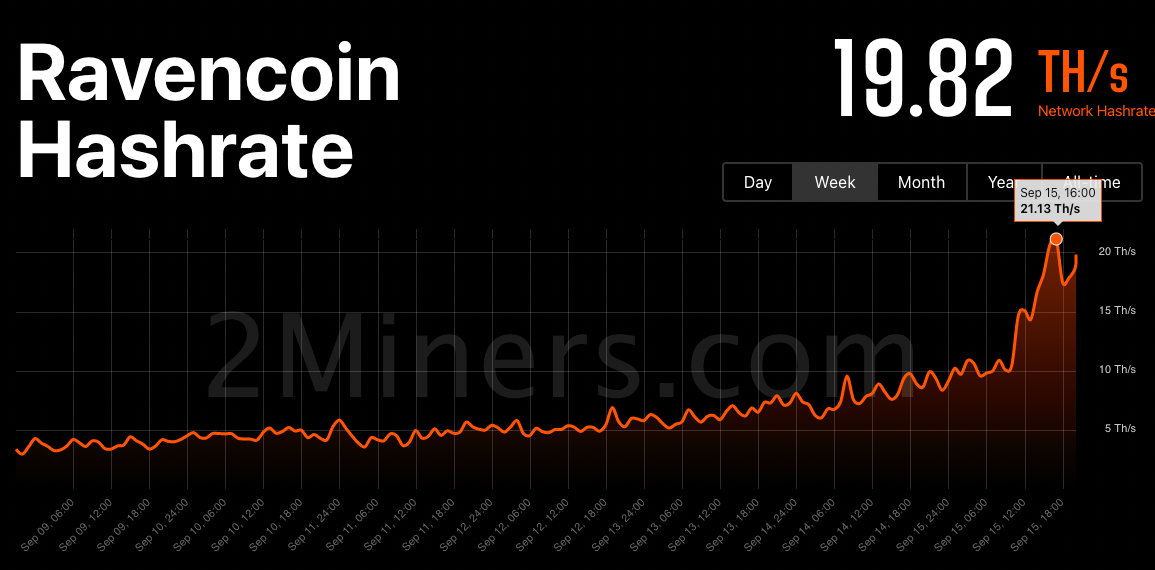Ethereum has successfully switched to PoS. What comes next
How the long-awaited upgrade of the second-largest blockchain will affect the crypto market

15.09.2022
24006
7 min
3
September 15 became a truly historic date in the history of the crypto world. The long-awaited upgrade The Merge on the Ethereum ( ETH) network finally took place. The blockchain of the second most important cryptocurrency has been migrated to Proof-of-Stake (PoS) consensus algorithm, and network management has moved from miners to validators.
The cryptocurrency community is closely watching how the shift away from mining in favor of staking will affect both the development of ETH and the industry as a whole. According to Ethereum founder Vitalik Buterin, he was “absolutely thrilled” about the end of the Proof-of-Work (PoW) era. “[It] has clearly been a dream for the Ethereum ecosystem almost from the start,” Buterin declared during the audience party for the Merge, streamed live on YouTube.
More than forty thousand people watched the “party” in the form of a Zoom conference, which was attended by key Ethereum Foundation developers and participants. At 6:43 UTC, the Merge went live, and when about 15 minutes later all key metrics showed positive results, the upgrade was officially completed successfully.
And we finalized!Happy merge all. This is a big moment for the Ethereum ecosystem. Everyone who helped make the merge happen should feel very proud today.— vitalik.eth (@VitalikButerin) September 15, 2022
There were no sharp jumps in the price of ETH, immediately after the Merge the price of the coin remained at $1600. The upgrade passed without any problems or bugs in general, but there were unusual cases. The first PoS blockchain on the network included a reward of 45 ETH (about $70 000), 36 of which were paid by an unknown user as a fee for releasing the very first NFT on the upgraded blockchain. Also within an hour, one of the validators managed by the Allnodes service for an unknown reason fell under the so-called “slashing,” which means blocking by the network for violating consensus rules.
The complexity of the upgrade was compounded by the fact that it required the coordination of dozens of teams, researchers, developers, and volunteers. In discussions on social networks, its process was compared to replacing the engine of a flying airplane. There are billions of dollars worth of applications, DeFi protocols, and digital assets deployed on the Ethereum network, but none of this was affected when the blockchain transitioned to the PoS algorithm.
What will happen to miners
The Merge is expected to improve Ethereum's security and scalability, as well as make it 99% greener. During a YouTube broadcast to celebrate the Merge, Justin Drake, chief researcher at the Ethereum Foundation, said that by leaving miners, Ethereum's transition to PoS has reduced global energy consumption by 0,2%, and Buterin quoted him on Twitter.
Such statements are already being sneered at by community members. Miners will obviously want to find a use for the equipment and transfer its capacity to other cryptocurrencies on PoW, thereby keeping earnings from mining coins, though not as profitable as ETH before the Merge.
Unlike bitcoin (BTC), which is largely consolidated and mined on an industrial scale, most ETH coins were mined by relatively small or private farms. Back in April, the popular blog 2miners published a detailed article with tips and instructions on converting equipment to other coins, including Ethereum Classic (ETC), Ravencoin (RVN) and Ergo (ERG). On the Merge day, the hashrate of all three coins showed record growth, and their price began to rise back in the summer when the community started to select candidates to replace the mined ETH more actively.
Thus, according to 2miners, the ETC hashrate showed a jump to 183 TH/s, which is 280% higher than the value of 64 TH/s recorded just a day before. Remarkably, the cryptocurrency's processing power has grown 500% in the past month. And since 2020, when the poorly supported ETC network was subjected to a so-called “51% attack” by miners, its hashrate has grown by more than 9000%, and the security of the blockchain has increased many times over.
The hashrate of Ravencoin cryptocurrency based on X16R algorithm increased 7,5 times in the past two weeks, peaking at 22 TH/s. The hashrate of Ergo, which can also be mined on graphics cards, jumped 370% from 29 to 157 TH/s.

The day of the Merge also saw the launch of the notorious PoW fork of the Ethereum network, which is already trading on exchanges and is supported by mining pools, including several leading services. At the time of publication, the hashrate of the “official” Ethereum branch token is 42 TH/s according to miningpoolstats.
It is worth noting that all services in the Ethereum ecosystem, including DeFi-protocols, decentralized exchanges, or NFT marketplaces, have announced that they do not recognize the fork. All digital assets remain on the official PoS blockchain. The ETHW fork, according to experts interviewed by GetBlock Magazine, will remain a “marginal chain,” and copies of the assets on its blockchain will have no value.
What's next
When Ethereum ran on PoW, miners received about 13 000 ETH daily as rewards. Now, however, miners have been replaced by validators, who hold significant amounts of ETH as collateral in the staking contract and validate new blocks on the network. In the event of likely abuse, the validator risks forfeiting funds due to the slashing mechanism.
Validators do not need to pay large electricity bills. This makes the system more efficient in terms of distributing the reward for blocks and takes pressure off the price from miners constantly selling mined coins to cover costs. Under current conditions, given the number of coins staked, about 1600 ETH per day will be produced, which is 90% less than before the Merge. Experts agree that in the long run, the deflationary model will drive up the price of ETH.
Of course, not everyone supports the excitement around Ethereum's move to PoS. Bitcoin supporters insist that the PoW algorithm is more reliable, secure and helps decentralize the cryptocurrency. Indeed, just four major validators account for more than 60% of staked ETH. For example, the staking service Lido controls more than 30% of coins on the PoS network, and about 30% of coins are collectively held by Binance, Coinbase, and Kraken, which also act as validators. There is concern among community members that hypothetical pressure on validators could lead to instances of censorship of specific addresses or transactions.
Eight myths about Ethereum's migration to Proof-of-Stake
Vitalik Buterin confirmed during the broadcast that Ethereum still has a long way to go. Specifically, he mentioned that transaction fees and transaction speeds have not been optimized in the upgrade, maintaining as much of a barrier to the growth of the user base as the environmental impact issue.
Until it becomes tangibly faster or cheaper to use ETH, the move to PoS will not increase network throughput. Investors cannot yet withdraw coins sent to staking, they will have to wait for 6 to 12 months for an upgrade called Shanghai to be activated.
Nevertheless, Buterin and other developers are confident that the Merge has become a critical precursor to all future upgrades that will help Ethereum grow and scale.
Useful material?
Articles
How the largest cryptocurrency exchange’s initiatives help it maintain its leadership
Nov 19, 2022
Articles
What fan coins are needed for and what events contribute to their growth
Nov 16, 2022
Articles
Why Binance set the trend to publish transparent data on available funds
Nov 14, 2022
Articles
The journalists got acquainted with the documents revealing the details of the financial condition of the exchange
Nov 13, 2022
Articles
Desperate traders with stuck assets resort to semi-legal schemes to save deposits
Nov 11, 2022
Articles
Experts predict when to expect new peaks of the crypto market by analyzing its previous cycles
Nov 10, 2022









 Telegram
Telegram  Twitter
Twitter